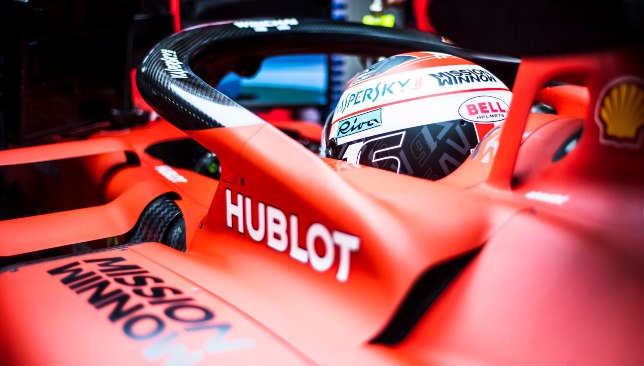
Ferrari is one of the founding fathers of Formula One but even in its long and rich history, some of the most famous moments have turned on split seconds.
1997 European GP – Michael Schumacher in three-way tie
The Jerez Circuit staged a unique qualifying session back in 1997. Competing for the final pole position of the season, three drivers incredibly clocked identical times during their qualifying laps, right down to an accuracy of one-thousandth of a second. It was the first such occurrence and the only one since.
Jacques Villeneuve was the first to set a time of 1:21.072 in the Williams 14 minutes into the qualifying session only for Michael Schumacher – leading the championship by a single point – to charge his Ferrari over the line in the same time, 14 minutes later.
With the paddock trying to come to terms with the tied laps, Villeneuve’s team-mate Heinz-Harald Frentzen crossed the line with nine minutes to go, with the exact same number on the clock.
As per regulations, the first driver to set the time was given precedence so Villeneuve was positioned first on the grid followed by Schumacher and Frentzen.
Jacques Villeneuve 1:21.072
Michael Schumacher 1:21.072
Heinz-Harald Frentzen 1:21.072
> 2012 British GP – Fernando Alonso
The third qualifying session at Silverstone in 2012 produced an epic battle between the Red Bulls, Ferraris and Schumacher’s Mercedes.
Fernando Alonso went quickest early on, followed closely by team-mate Felipe Massa to set a Ferrari front row, only for Red Bull duo Mark Webber and Sebastian Vettel to replace them at the front of the grid late on.
Schumacher then joined the party, nudging Webber off pole position. The Australian fought back straight away though, reclaiming top spot with his next lap.
There was one more twist in the tale however and it belonged to the Prancing Horse. With the final lap of the session, Alonso beat Webber’s time by five hundredths of a second to finally secure pole position. Significantly, it was Ferrari’s first pole position since the Singapore Grand Prix in 2010.
Fernando Alonso 1:51.746
Mark Webber 1:51.793
Michael Schumacher 1:52.020
> 2003 Austrian GP – Michael Schumacher
One of Schumacher’s best traits was his absolute refusal to accept defeat and that was epitomised in this stunning lap in Austria. Kimi Raikkonen held provisional pole in the McLaren with only the Ferrari driver left to run.
The Finn’s place at the top of the grid looked certain when Schumacher followed a poor first sector – 0.159 seconds slower than Raikkonen – with a lock-up into turn two to begin the second sector. He had an uncanny ability to mitigate his time lost even in a slide, though, and only conceded another 0.049 seconds before storming through sector three.
The German left the paddock stunned when he incredibly crossed the line 0.039 seconds quicker than Raikkonen to snatch pole position with a dramatic final lap of the day.
Michael Schumacher 1:09.150
Kimi Räikkönen 1:09.189
Juan Pablo Montoya 1:09.391
2018 Italian GP – Kimi Raikkonen
Ferrari arrived in Monza desperate to claim a first pole position in their home race for eight years. That painful drought ended in style.
While Lewis Hamilton held provisional pole as he embarked on his final lap, he had the two scarlet reds right behind him. An intense round ended with the Brit unable to improve on his 1:19.294 time with Vettel duly pushing him down the grid, clocking in at 1:19.280.
Cheers from the home support then escalated to even louder celebrations when Raikkonen crossed the line with a time of 1:19.119 to secure pole position and complete a front row lockout for Ferrari.
It was also the fastest lap of all time with an average speed of 263.587kph breaking Juan Pablo Montoya’s record of 262.242kph at the same circuit in 2004.
In true Raikkonen fashion, the drama and excitement around the venue wasn’t reflected on the team radio.
The Finn’s engineer Carlo Santi issued a calm and brief message: “Kimi, you are on pole.”
“Thank you,” came the Iceman’s monotone response. Cool as you like.
Kimi Raikkonen 1:19.119
Sebastian Vettel 1:19.280
Lewis Hamilton 1:19.294
1977 Long Beach GP – Niki Lauda
Niki Lauda had made a remarkable recovery from a near-fatal accident in the 1976 season. Following his Nurburgring crash, he won an intense battle for his life but only missed two races, returning for the Italian GP.
In the third race of the next season, Lauda secured his first win since the accident. That race in South Africa though was marred by the tragic deaths of driver Tom Pryce and marshal Fredrik Jansen van Vuuren.
Leading up to the Long Beach GP, Carlos Pace also lost his life in an airplane crash. Lauda though showed immense focus during a sombre qualifying session, snatching his first pole since his own brush with death.
The Ferrari driver had beaten home hero Mario Andretti to the top of the grid by two-tenths while boasting a comfortable gap of over half a second to his team-mate Carlos Reutermann in fourth.
He would go on to win his second title that season.
Niki Lauda 1m 21.630s
Mario Andretti 1m 21.868s
Jody Scheckter 1m 21.887s
Since 2011, Hublot and Ferrari have been fusing the very best of watchmaking and automotive expertise by making uniquely designed watches characterized by innovation, excellence and performance. The first watch was created in 2012, named the Big Bang Ferrari Magic Gold with its patented nearly scratch-proof 18-carat gold.